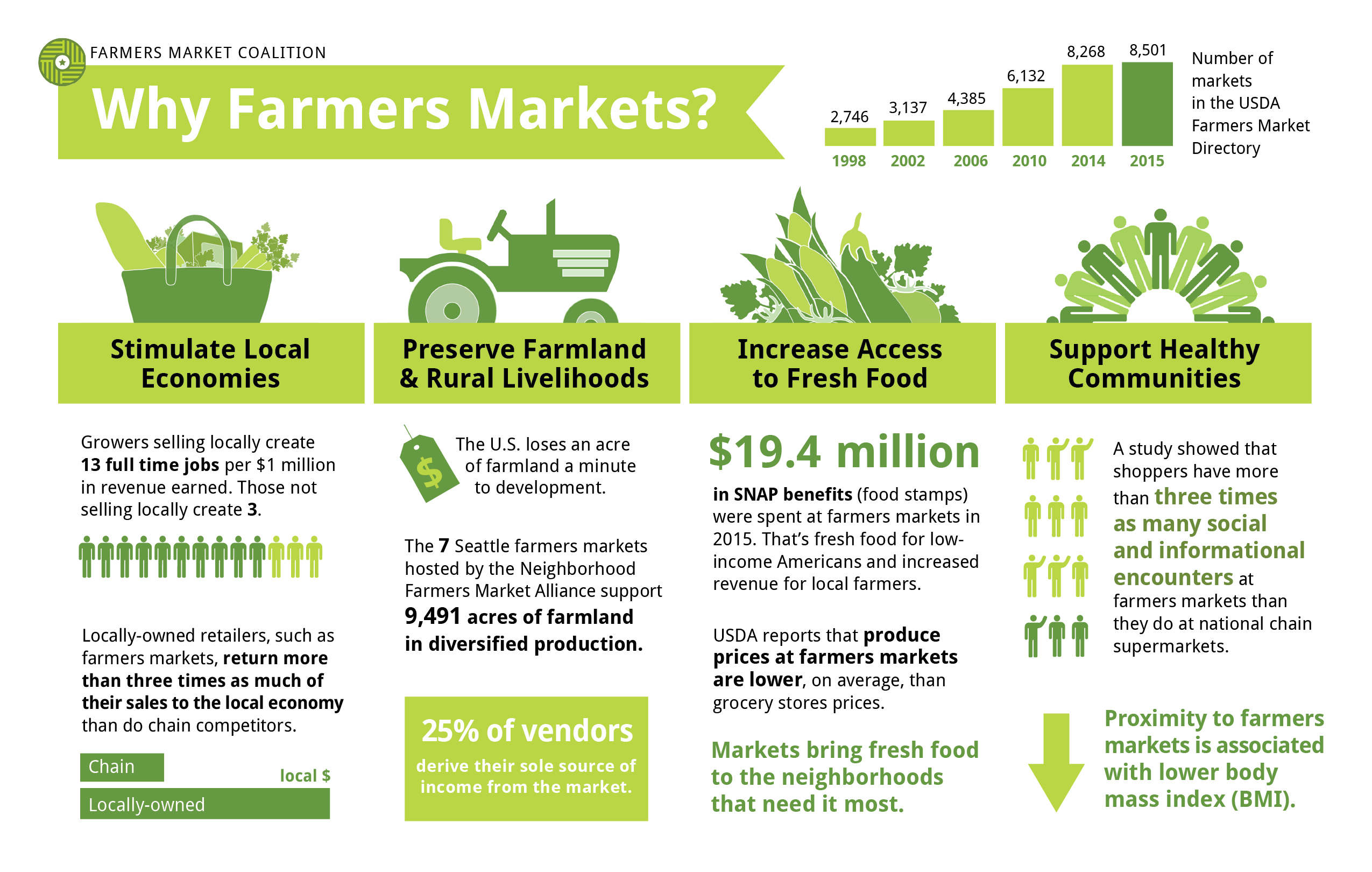CFS attorney Amy van Saun shared these photos from her local farmers market in Portland, OR. The Woodstock market started in 2010. Amy's market strives to be accessible by accepting food stamps and offering a wooden coin system for vendors that are cash-only.
As soon as the snows stop falling in early spring until they begin again in late fall, on any given day here in our nation’s capital, I can find a bustling farmers market to visit. Farmers and growers from throughout our region bring the bounty of the season into the city and spread produce, milk, cheeses, flowers, homemade jams and pickled vegetables, eggs and meats on tables beneath tents. Nearly every neighborhood here in D.C. has its own farmers market, and each one features different, unique vendors. And while it may seem commonplace these days to find accessible farmers markets not just in cities, but all over the country – on campuses, in churches, small communities and elsewhere – I often forget that this is wonderful phenomenon is a relatively new normal. In fact, according to the Farmers Market Coalition, by the start of 2016, there were more than 8,500 farmers markets in the U.S., 50 percent more than just five years ago!
The “growing” popularity of farmers markets around America is a hopeful indicator that individuals and communities are assuming a more active role in reigniting a food system that operates under the premise of sustaining human, environmental and animal health and well-being. During the past half century America’s farming economy and culture has seen a dramatic shift toward an industrialized agricultural system. That system has decreased livestock and land health, given rise to disease, increased the widespread use of toxic pesticides, and put family farmers out of business – between 2007 and 2012 alone America lost more than 95,000 mostly mid-sized family farms.
The most important functions farmers markets can and do play in our country are to help bring us back to an agricultural system that promotes soil health, rather than degrade it; focus on sustainable and organic farming practices; and put control back into the hands of family farms instead of corporations. Farmers markets support local producers, vendors, and economies; bring diverse members of the community together; and encourage eating with the season – which in turn reduces the social and environmental costs of shipping fruits and vegetables around the world. They also help to preserve small and mid-sized farms that have difficulty competing with large agribusiness, and increase access to fresh, nutritious food sources – especially in urban areas where disadvantaged communities might otherwise be stuck in food deserts.
The benefits of farmers markets are numerous and varied. But even knowing this, perusing your favorite market (or a new one) can be overwhelming. I myself have been guilty of wandering from table to table ogling the offerings and going home emptied-handed. So, I thought it might be useful to share a few tips on how to get the most out of your farmers market experience.
Look for organic!
Not all vendors offer organic, but nearly half of markets sell organically labeled products, and many others sell chemical and/or pesticide-free. While it can always be improved, organic is still the best system for human, animal and environmental health. Here at CFS we are constantly engaged in the fight to maintain and increase the integrity of the organic label, from commenting on organic animal welfare standards to helping organic producers get state and federal funding.
Talk to your farmers
Don’t just walk by the stalls with your head down, pick your peas, pay and leave! Making a personal connection with the people providing your food helps you to understand your role in the food system, so engage with your farmers and the people working with them; ask them questions; learn about their lives and how you’re impacting them. You can also get great tips for your own growing. Many farmers are employing the science-based, agroecological practices that CFS promotes (like the 81% of vendors who incorporate cover crops, reduced tillage, on-site composting and other soil health initiatives), and would be happy to show you how to do so on a smaller scale in your own gardens.
Take the next step
While farmers markets are most popular during the summer months, don’t forget that there are options to remain involved in and benefit from markets all throughout the year. Many farmers and producers participate in and offer co-op and CSA options. Find out what your local options are and you can eat locally and in-season even during the colder months. Another option is to volunteer. Most vendors are happy to have an extra hand, and/or can connect you with an initiative that could use help. And if you’re interested in educating and mentoring, urban agriculture projects especially often engage with youth groups to bring back healthy and sustainable eating and growing practices to the next generation.
So what are you waiting for? Get out there and get your market on… and share your experiences with us! We always love seeing and hearing from our community. Tweet us @CFSTrueFood to show and tell us about your favorite farmers market! Learn more at www.centerforfoodsafety.org.

(Infographic source: Farmers Market Coalition)






